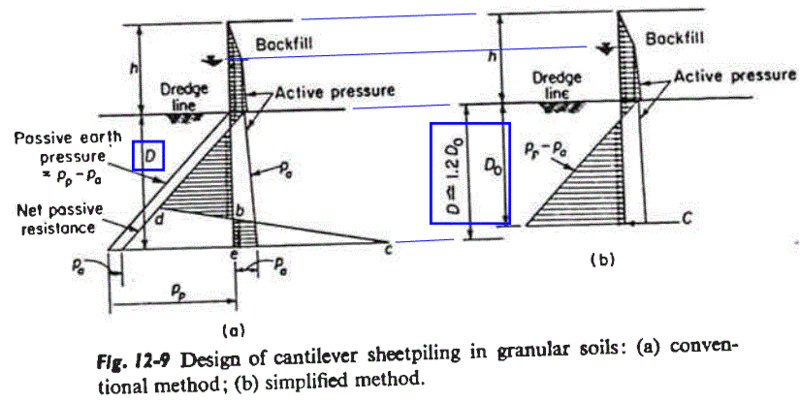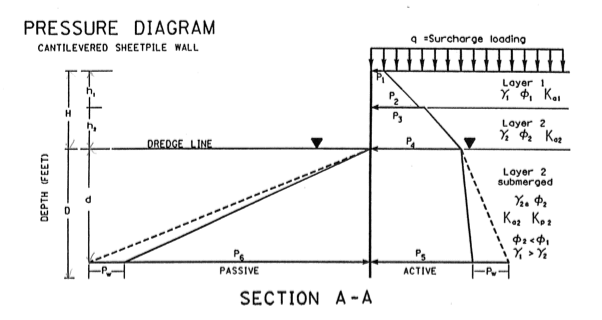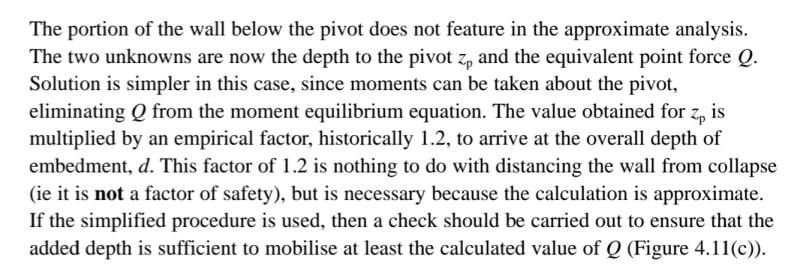ChiEngr
Structural
- Oct 19, 2021
- 77
Hi Everybody,
I have a general question with regards to cantilevered sheet pile wall analysis with Granular soils. I am able to easily perform the pressure analysis due to active and passive pressures on the wall when there is no surcharge. However, when surcharge is introduced I am a bit confused. Do I include the surcharge only as an active pressure on the wall? Or should I be multiplying the surcharge pressure by (Kp - Ka) if I am trying to determine the passive pressure acting on the wall? I guess my question is, in the attached image, how do I incorporate the surcharge in calculating P_J. It does not make sense to me to multiply that pressure by (Kp-Ka). I have looked endlessly through textbooks and online for examples of this situation, and I am shocked I have not found anything of the sort. Thanks in advance for your help!
I have a general question with regards to cantilevered sheet pile wall analysis with Granular soils. I am able to easily perform the pressure analysis due to active and passive pressures on the wall when there is no surcharge. However, when surcharge is introduced I am a bit confused. Do I include the surcharge only as an active pressure on the wall? Or should I be multiplying the surcharge pressure by (Kp - Ka) if I am trying to determine the passive pressure acting on the wall? I guess my question is, in the attached image, how do I incorporate the surcharge in calculating P_J. It does not make sense to me to multiply that pressure by (Kp-Ka). I have looked endlessly through textbooks and online for examples of this situation, and I am shocked I have not found anything of the sort. Thanks in advance for your help!





